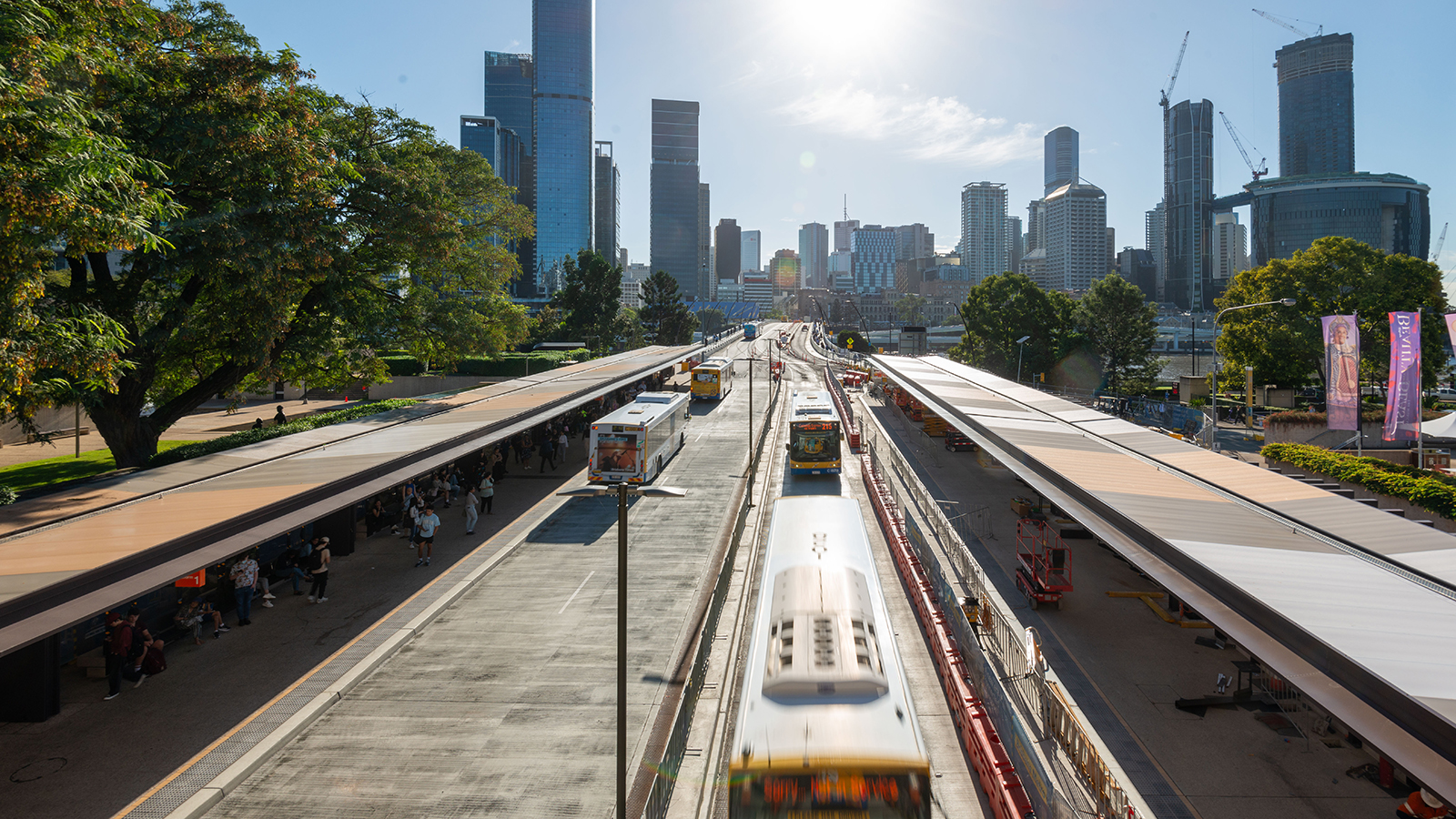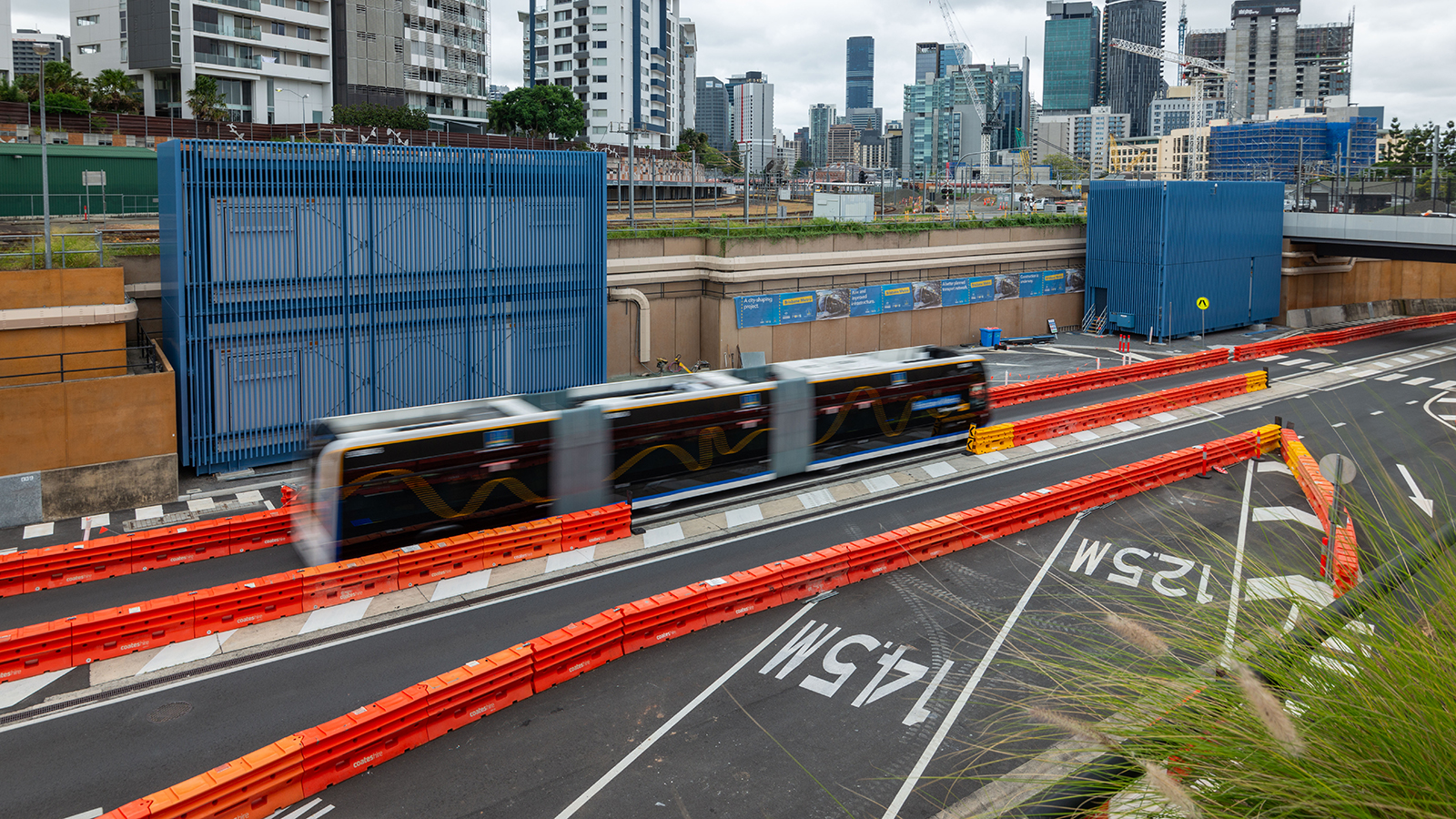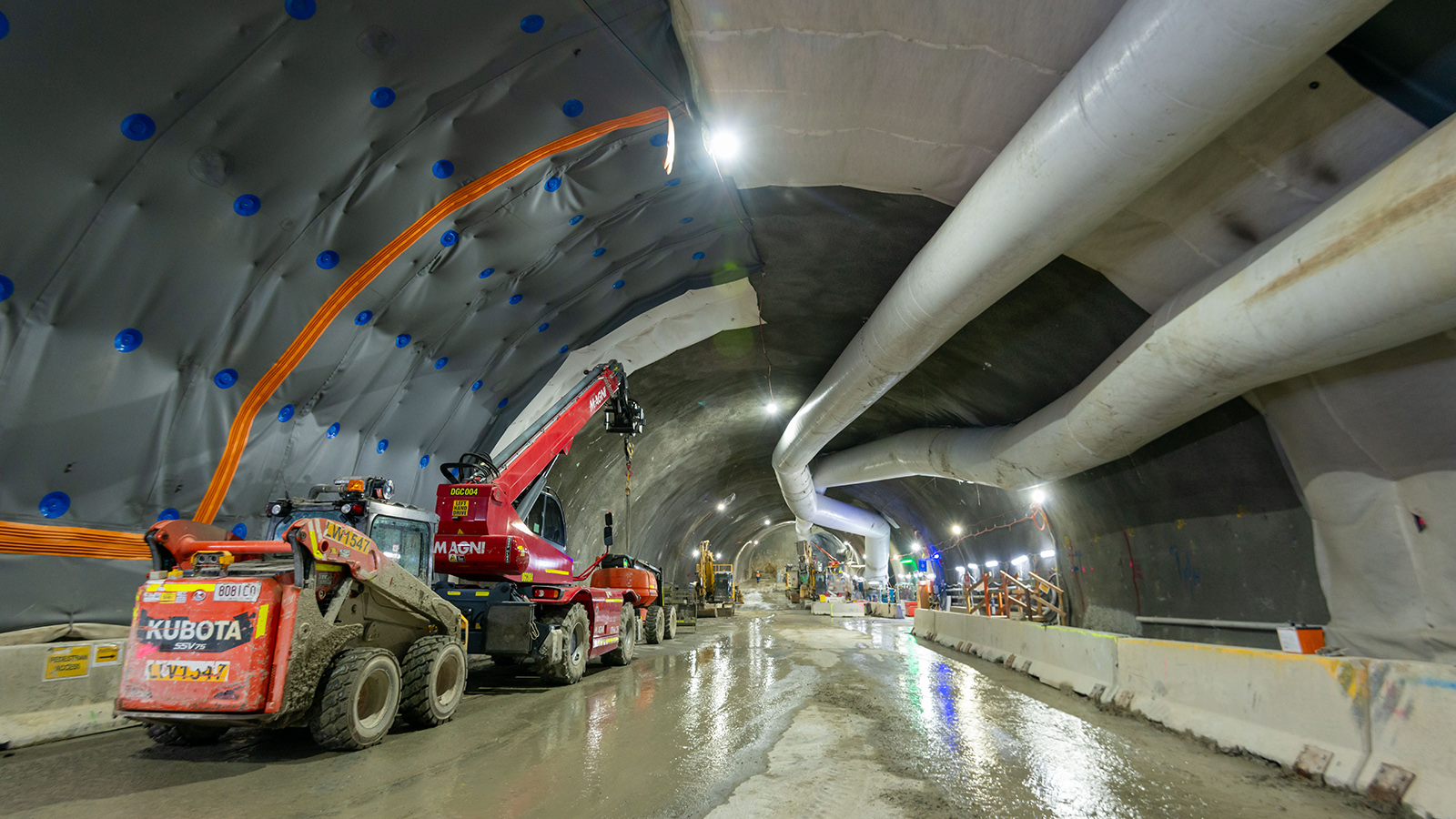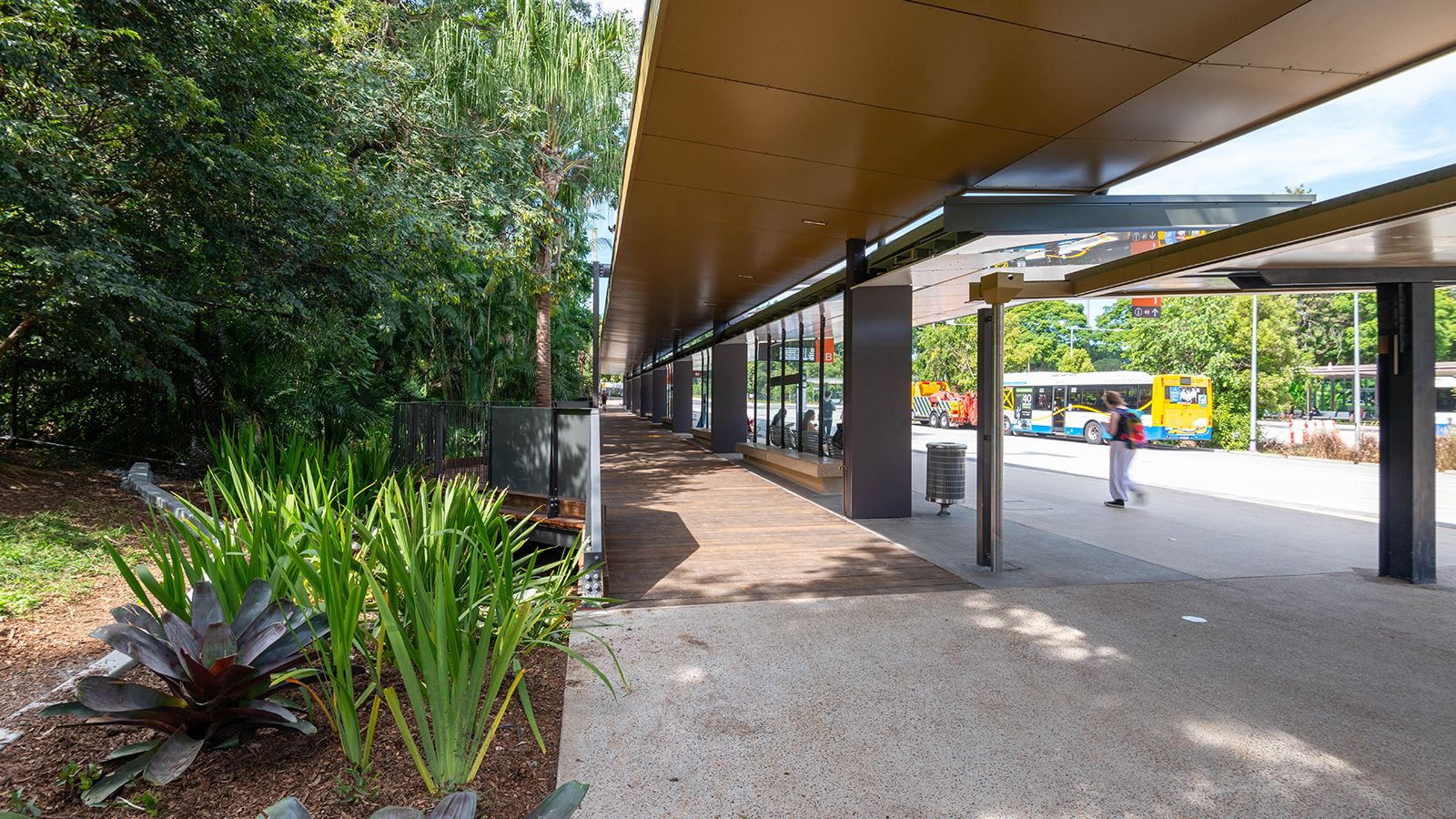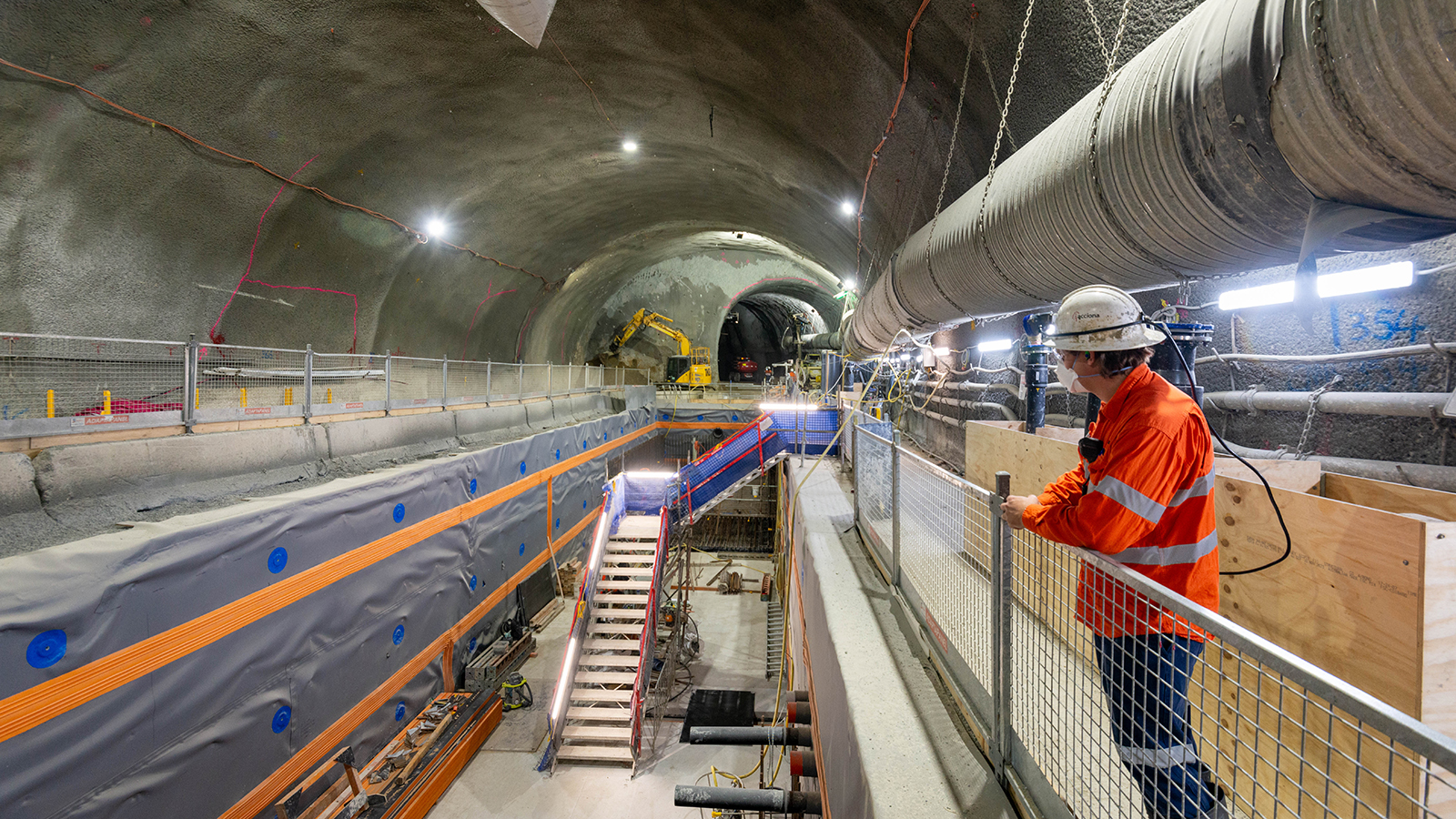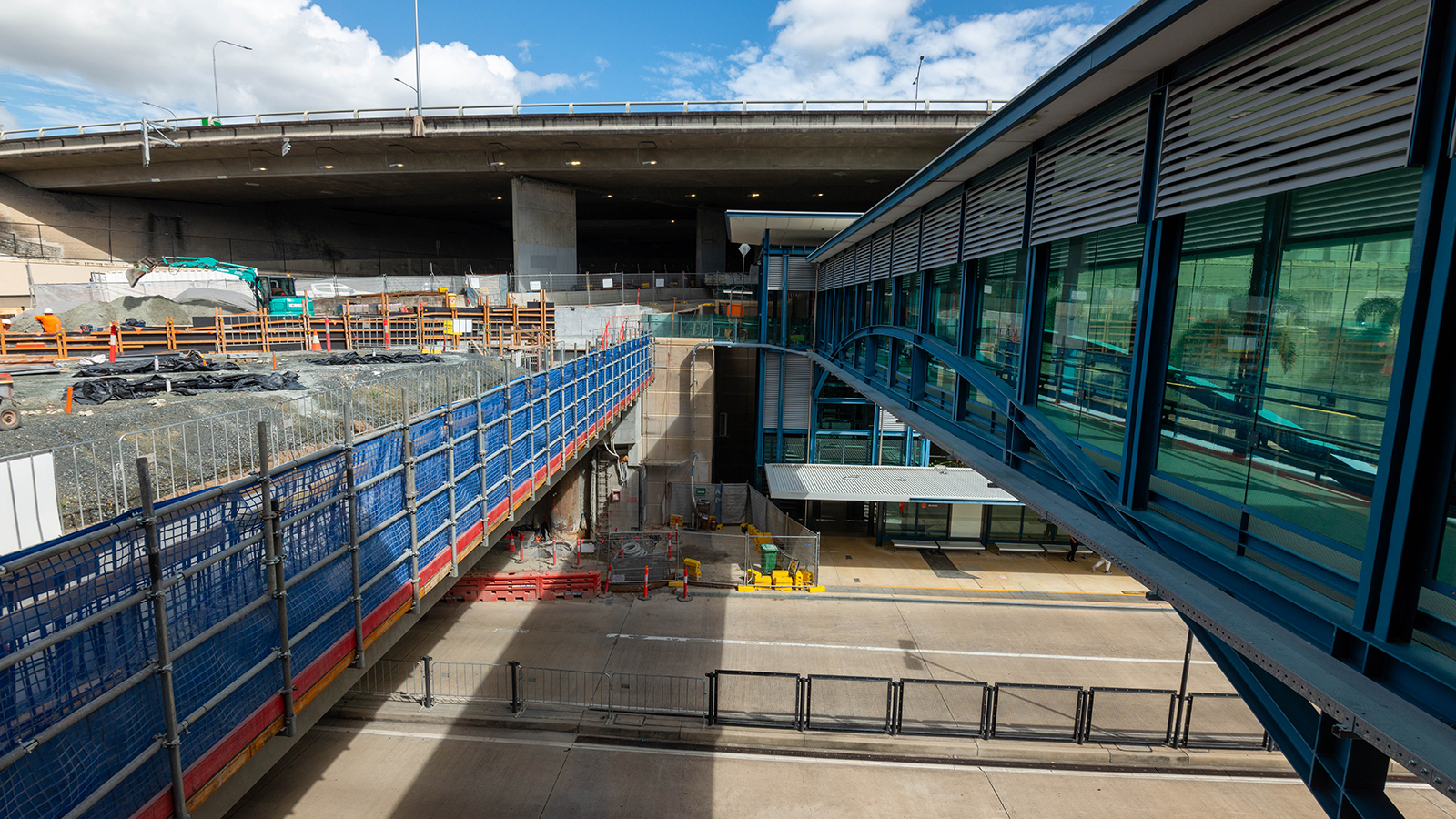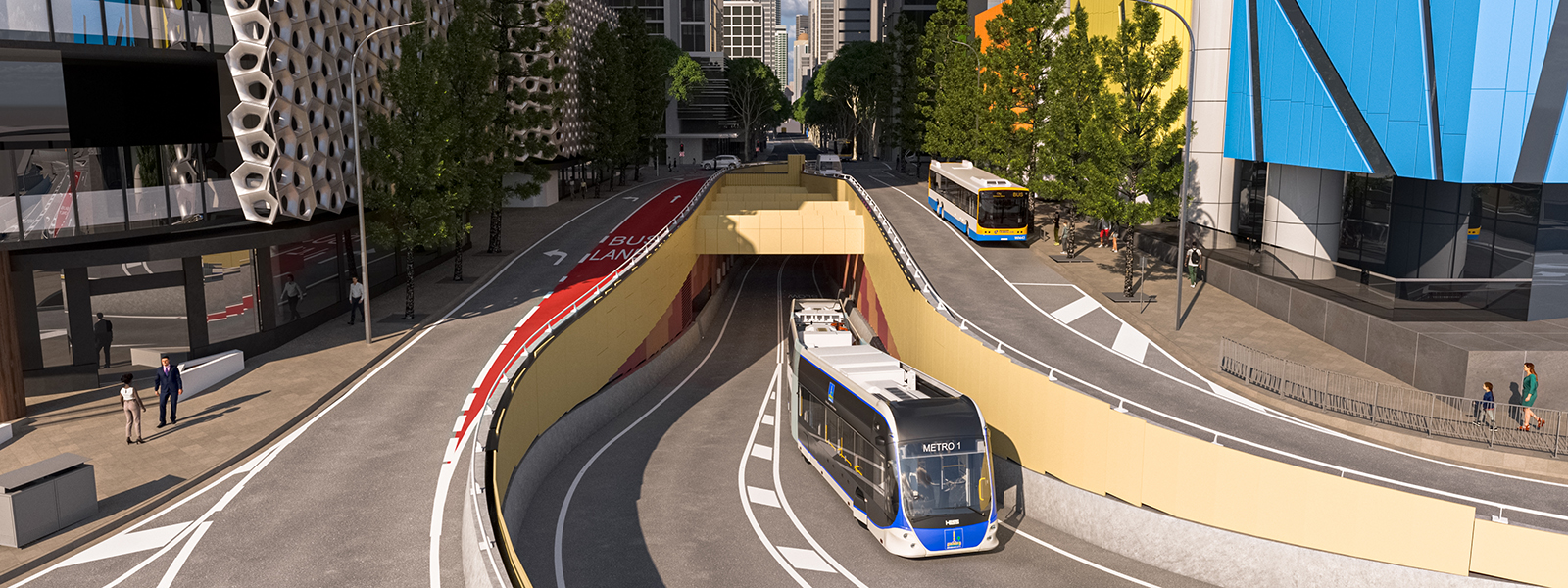
About Brisbane Metro

Brisbane Metro will deliver fast and frequent travel between the suburbs and the inner-city through a fleet of high-capacity electric metro vehicles, the first of their kind in Australia.
In addition to metro fleet, Brisbane Metro is also delivering new and improved infrastructure. This includes upgraded stations, a new tunnel beneath Adelaide Street, improved active transport connections and enhanced public spaces.
The expected cost to deliver Brisbane Metro is $1.55 billion. Brisbane Metro is funded in partnership between Brisbane City Council and The Australian Government.
Find what you need
Infrastructure
- A new tunnel beneath Adelaide Street and revitalised streetscape from North Quay to Edward Street
- An upgraded Cultural Centre station
- An enhanced gateway to the Cultural Forecourt with new landscaping and wider footpaths
- Upgrades to Victoria Bridge for metro and bus services, and dedicated cycling and pedestrian pathways
- Upgrades to some suburban stations including UQ Lakes station and Buranda busways station
- New end of route vehicle charging and layover facilities
- A new metro depot at Rochedale.
Metros
- A new fleet of electric metro vehicles
- Electric operation with fast charging in just over six minutes at end of route locations
- Bi-articulate design, providing three spacious passenger compartments
- Extensive consultation with the accessibility sector to deliver a leading accessible public transport option
- Real-time onboard customer information to help plan your journey.
Network and services
- Two new metro services connecting 18 stations and providing interchanges at 11 locations
- Easy connections to other public and active transport options
- Future connection to Cross River Rail with interchanges at Boggo Road station and Roma Street station
- A revised network to future proof our city.
You can also view this video on Council's YouTube channel.
Our brighter future
Council is reimagining sustainable transport to create a cleaner and more vibrant city. Our fleet of electric metros will mean cleaner air with zero tailpipe emissions. But it’s not just the vehicles that are sustainable. By maximising and upgrading existing busways and stations rather than starting from scratch, we’re avoiding unnecessary works.
Where we are building new, we’re choosing innovative engineering methods and aligning with best-practice industry standards to reduce emissions. Alongside smart planning and network improvements to reduce congestion, Brisbane Metro is also making it easier to cycle, walk and scoot by upgrading bike lanes and footpaths – so you can choose the way to get around our city that works for you.
Case study: Metro depot
The electric metro fleet will be housed and charged in Australia’s largest and most technologically advanced bus depot at Rochedale. There will be 60 slow chargers that will power the metros overnight and enhance battery lifespan, while five fast chargers will support with daily metro services.
To help keep the metros moving, the new depot will harness one megawatt of solar power and utilise harvested rainwater and recycled water in the wash bay area. The depot is on track to achieve a 5 Star Green Star rating.
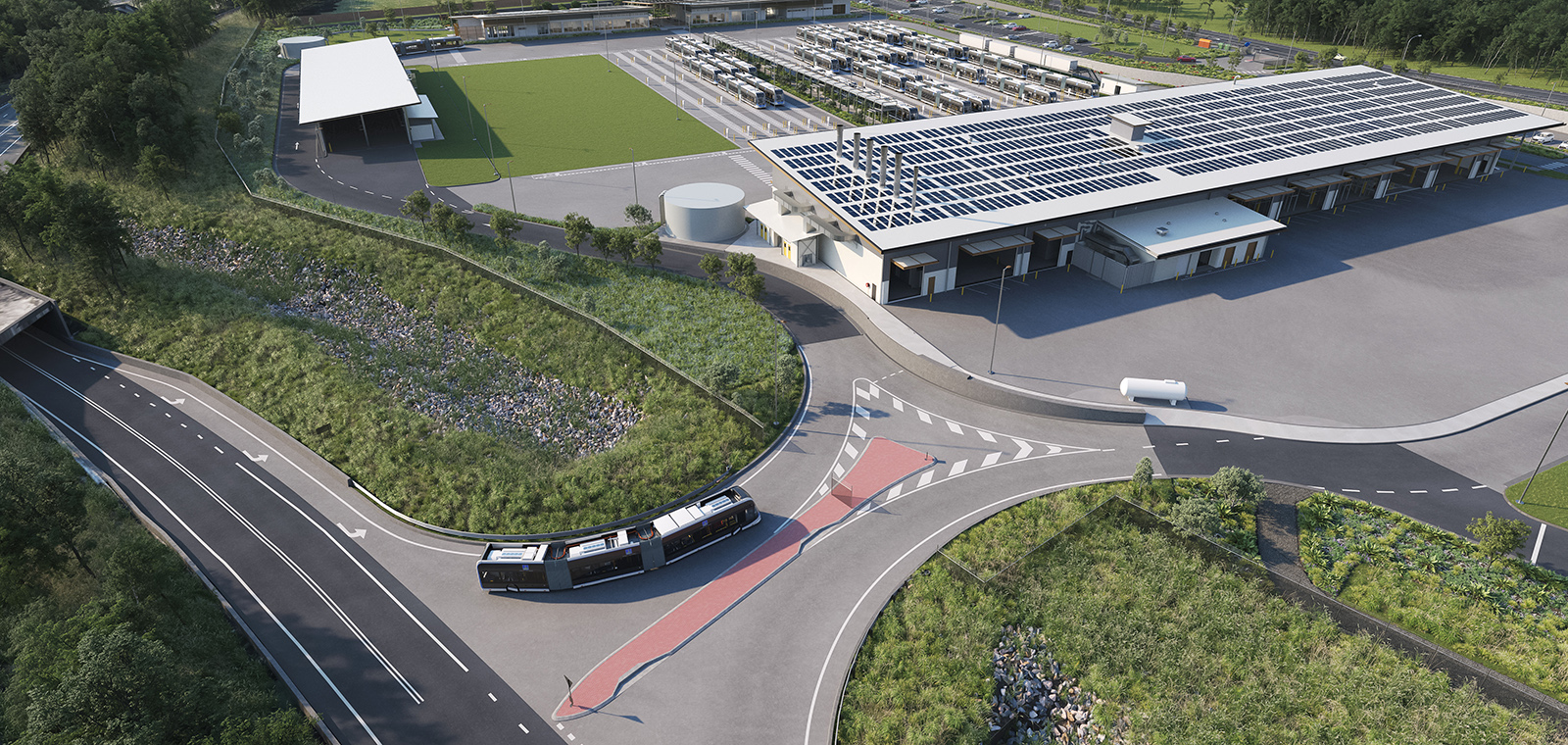
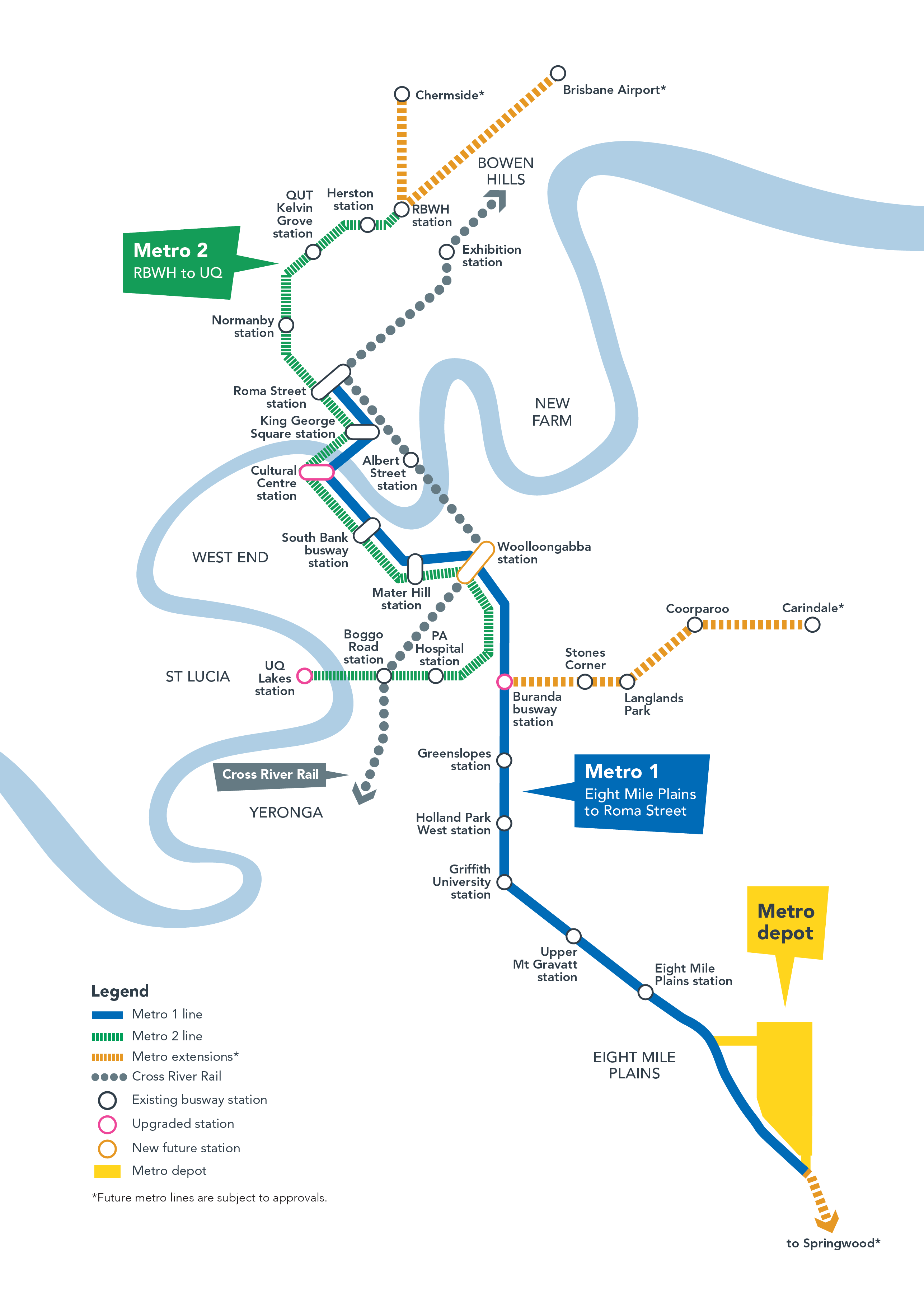
Contact us
If you have any questions or would like more information about Brisbane Metro, you can:
- register for project updates
- phone the project team on 1800 692 333 during business hours
- phone Council on 07 3403 8888 after hours
- email the project team
- write to:
Brisbane Metro
Brisbane City Council
GPO Box 1434
Brisbane Qld 4001.
